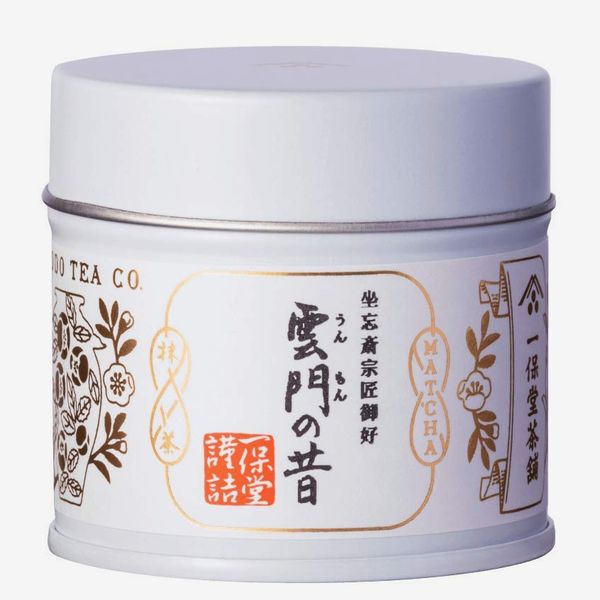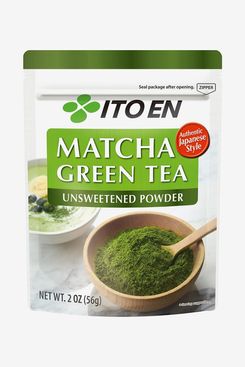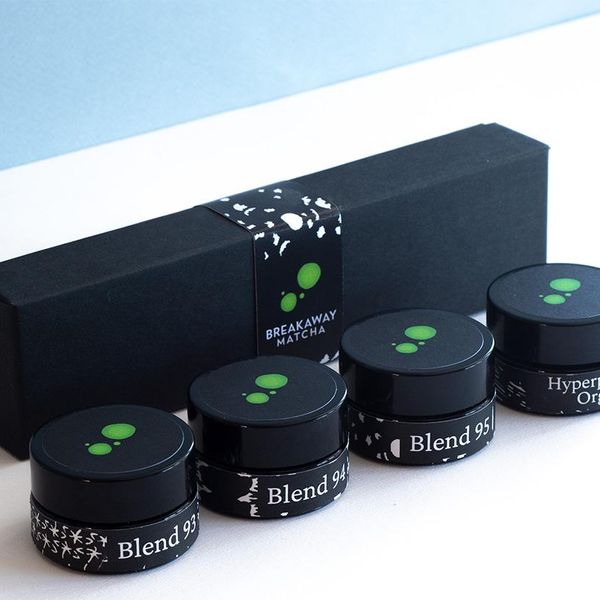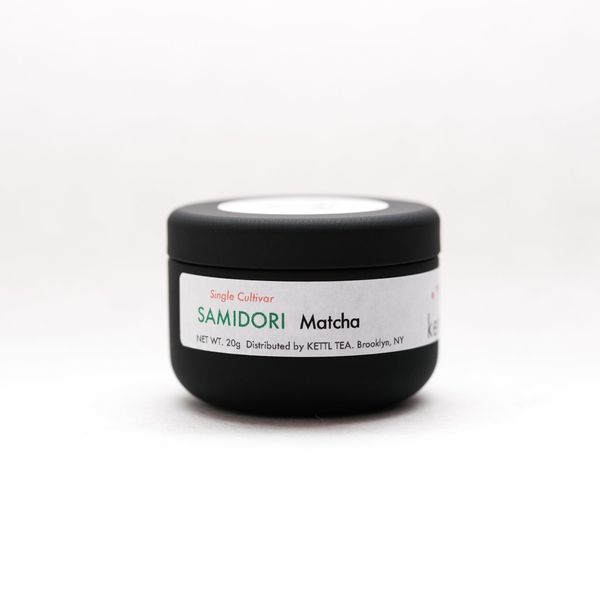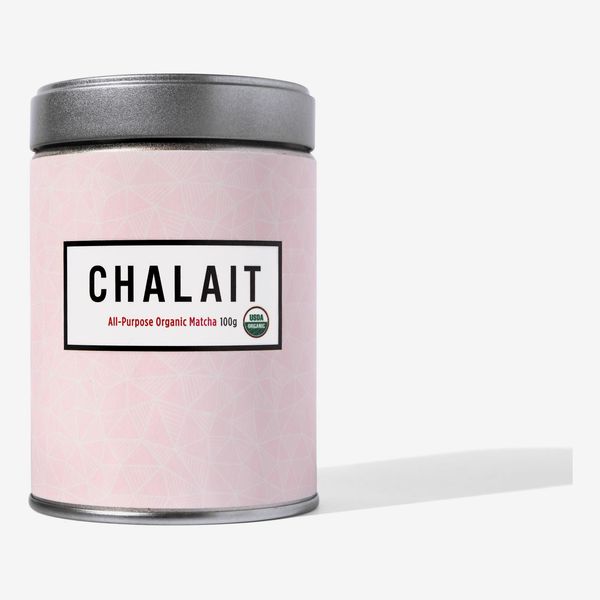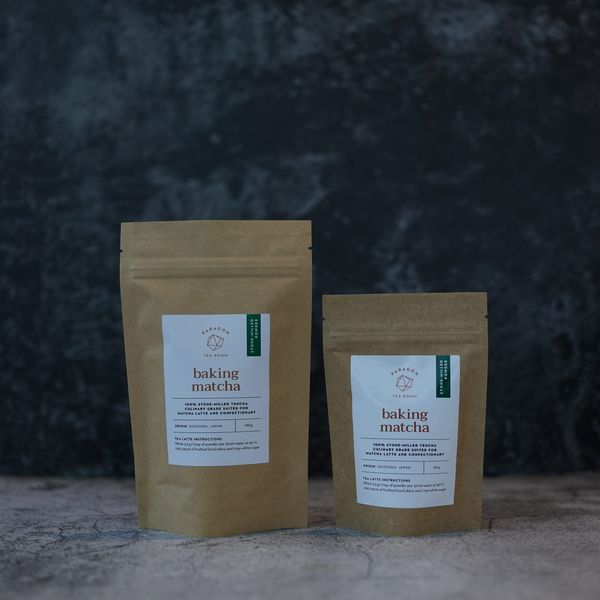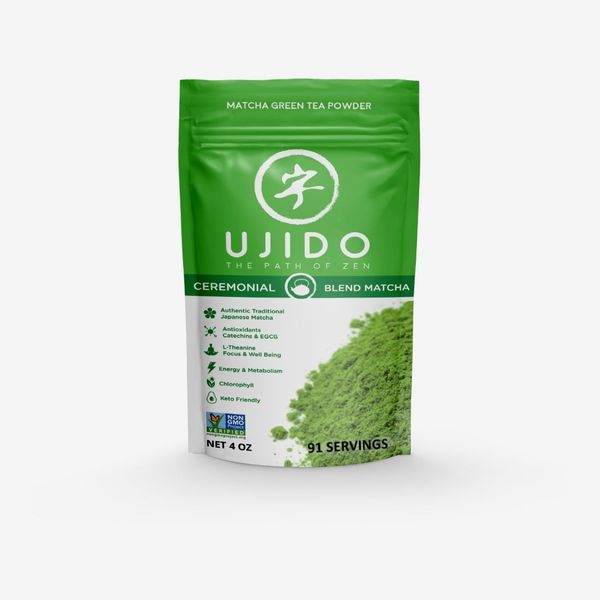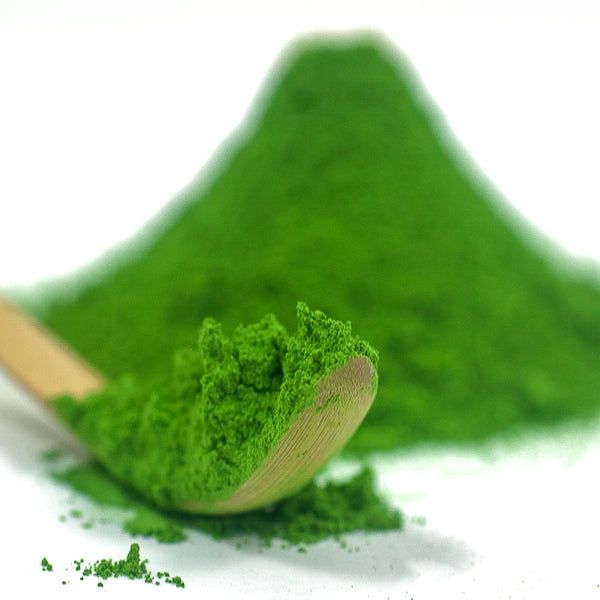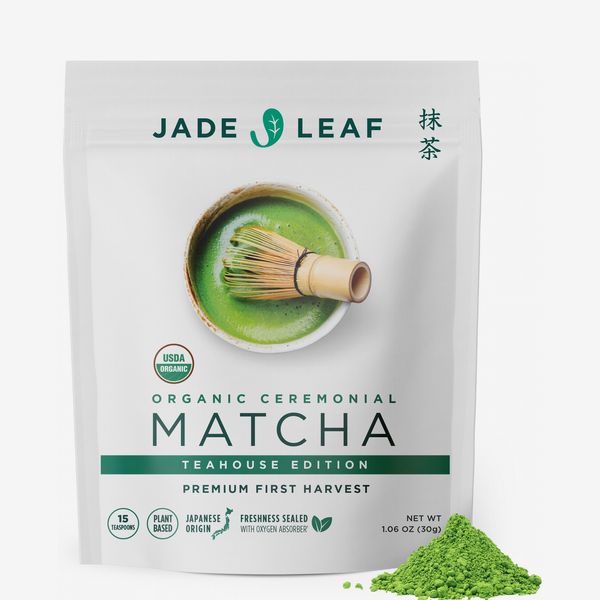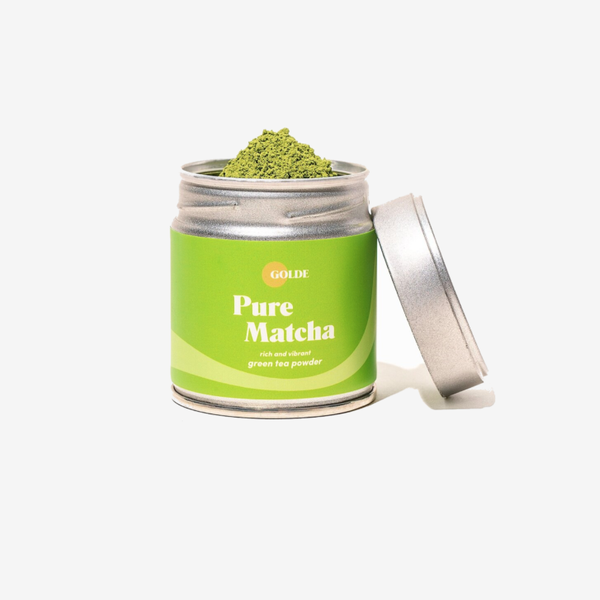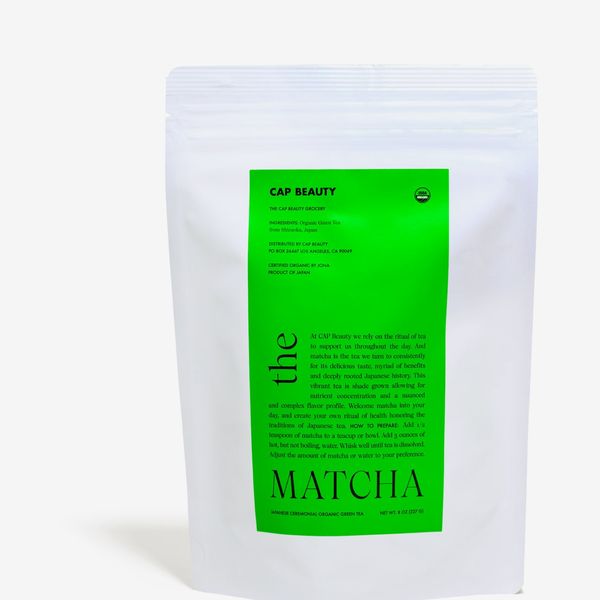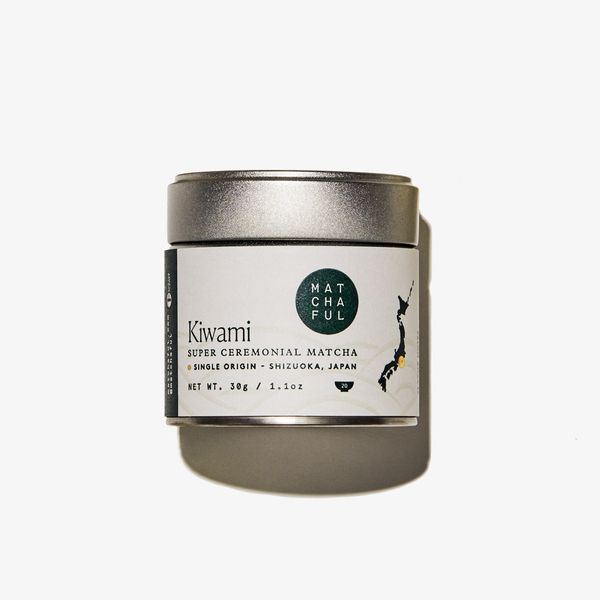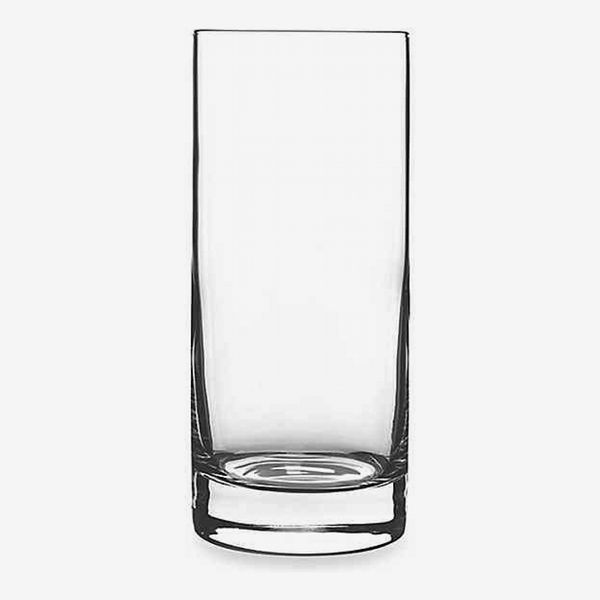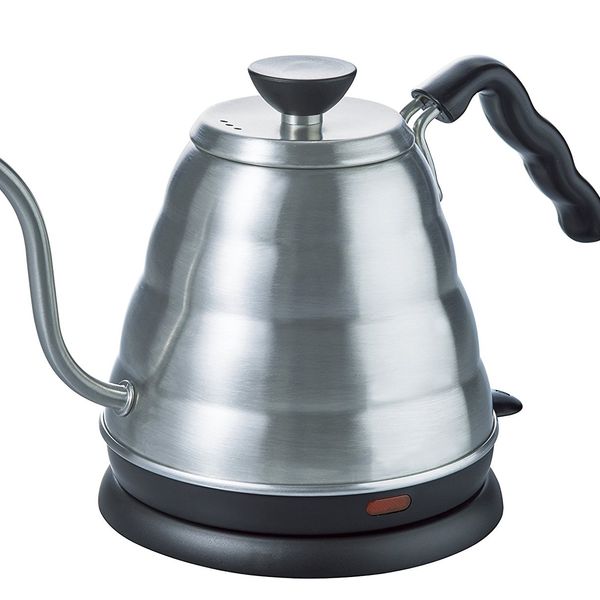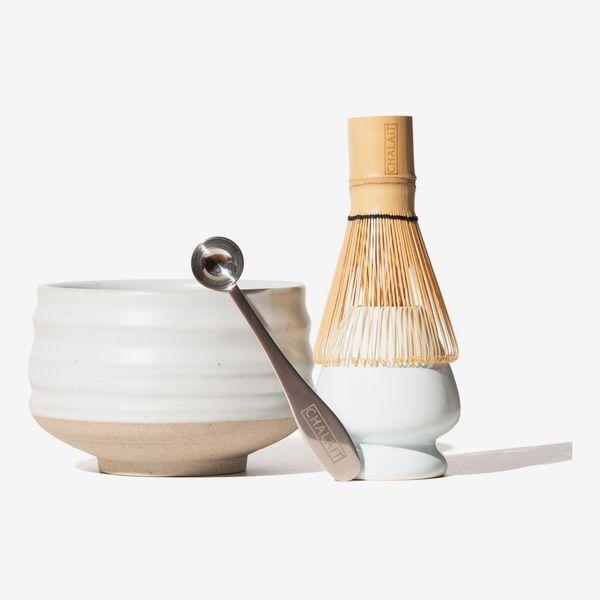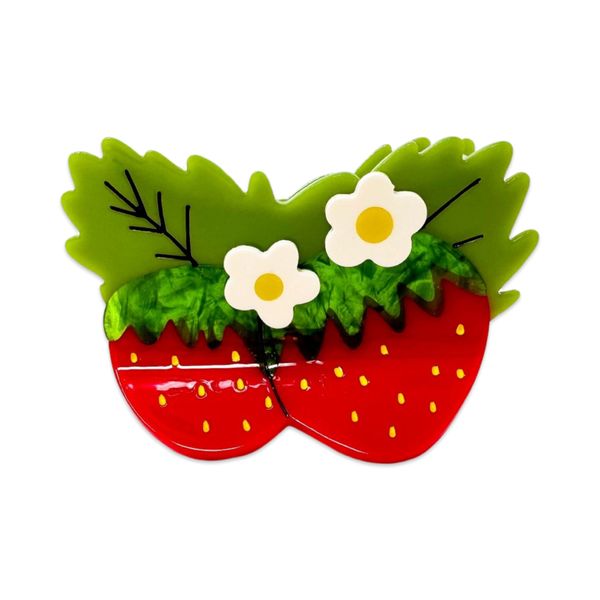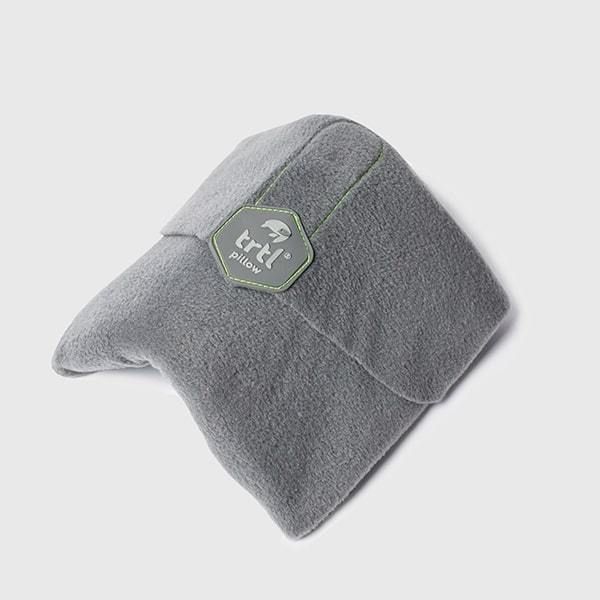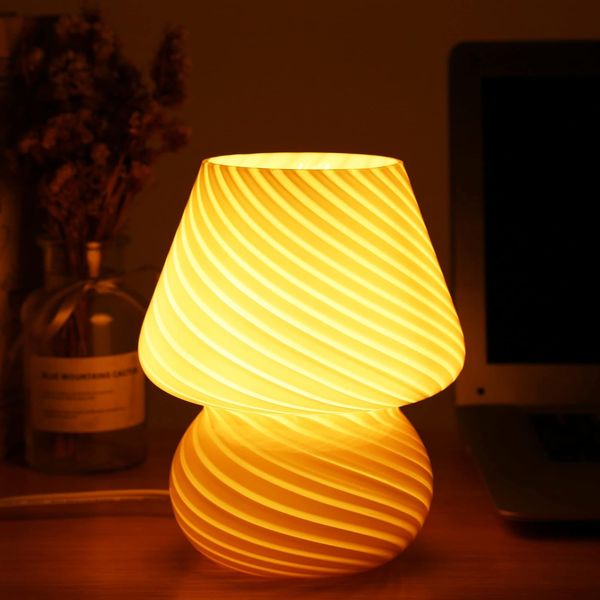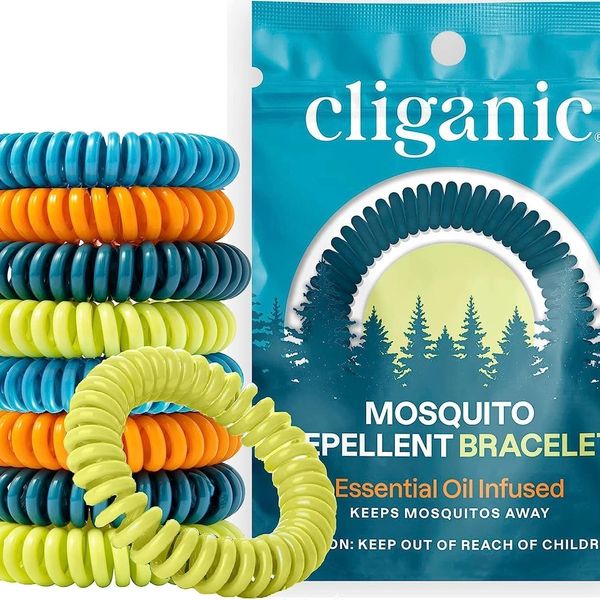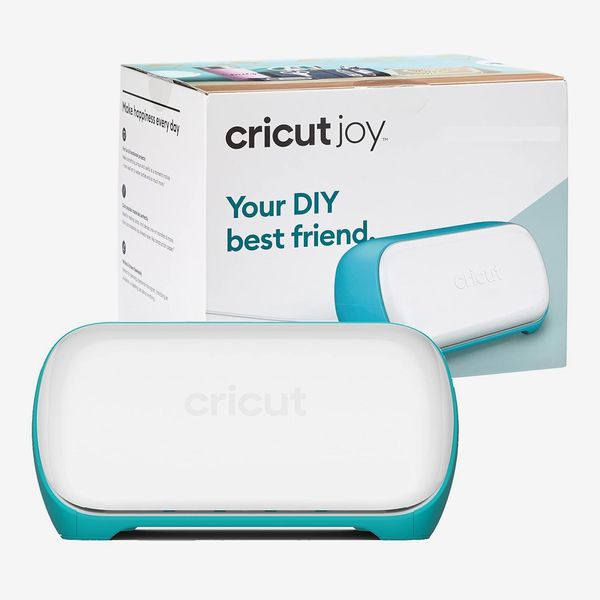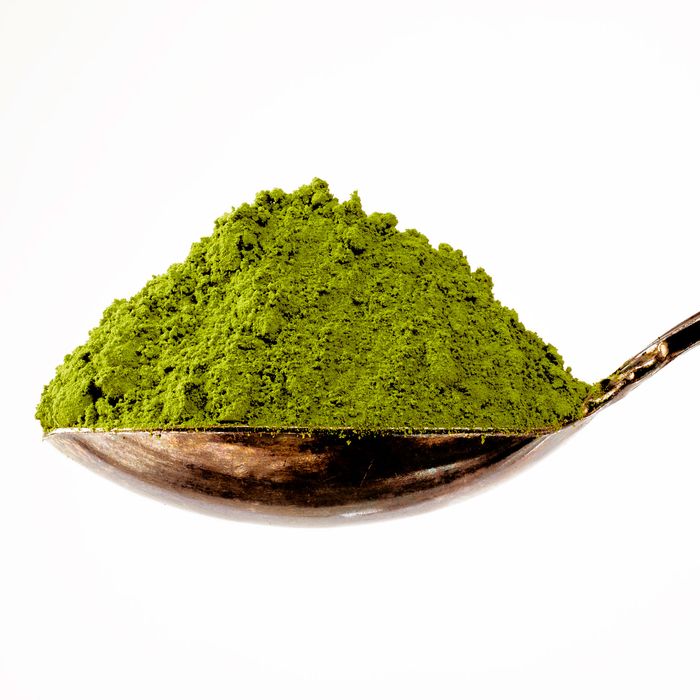
In this article
Making matcha — green tea that you fully incorporate, instead of steep, into water — can be a finicky practice. It all starts with creating the powder, a process that dates back to 12th-century Japan. (The overall technique of drying, pulverizing, and then mixing whole tea leaves into water to drink dates back even earlier, to tenth-century China.) Today, with their proliferation in countless shops and grocery stores, matcha powders are not necessarily made equal from tin to tin. When I went on a hunt to find the best ones, nearly all the experts I consulted warned that products can vary in flavor and bitterness due to rushed or irregular tea-leaf handling.
One way to ensure you’re setting yourself up for success is to look for brands that import tea from Japan because the processing there is generally more consistent than in other places. And it’s important to make sure the brand itself is trusted. There are a zillion out there, so to land on the best matcha powders, I talked with many experienced matcha drinkers and bakers about their favorites — and though my regular routine consists of drinking coffee, I tested a few varieties out myself, too.
What we’re looking for
Grade
There are two common categories of match powders to know. Ceremonial-grade is best for drinking, whether that’s the traditional way, in water, or in something like a latte. According to Michelle Puyane, owner of Chalait in New York City, “There’s no official definition or regulation around what ‘ceremonial-grade’ is, but it generally means matcha made from the youngest, most tender leaves, ground with stone to keep them cool.” Culinary-grade matcha is better for baking. “Culinary-grade should have a more intense taste, so that it can stand up to sweetness or dairy or whatever else it mingles with, ” Puyane says. “If the matcha is too subtle or smooth, the flavor will get lost.” (It should be noted that you can — and many people do — bake with ceremonial grade powder. You just want to be careful you’re not wasting a super expensive product somewhere it will disappear.)
Flavor profile
This is, of course, a subjective category, like defining the tasting notes of wine or olive oil. But the more matcha you try, the more you’ll come to understand that some lean more bitter, others smoother. Some have chocolate undertones, others a strong sense of umami. I did my best to describe each, based on what the experts and the company websites said.
Best matcha powder overall
Grade: Ceremonial | Flavor profile: Earthy, creamy, umami, robust
The Kyoto-based tea company Ippodo has long been on my radar and was recommended to me by multiple matcha aficionados. I used Golde’s handheld milk frother when I tested Ummon myself to make iced matcha (blend first, then pour over cubes). The powder integrated seamlessly into the water with no residual grainy bits or clumps to be found. And the resulting drink was super refreshing, the earthy notes pronounced even at a cold temperature.
When setting out to write this piece, I remembered when Karina Hoshikaw, a senior writer at Refinery29, told my colleague a while back that the brand makes “the best matcha I’ve ever had.” When I recently checked back in, she told me she’s “still loving it.” Her go-to is “earthy, creamy” Ippodo Ummon Matcha, which she drinks plain, preparing it “the way my obaachan taught me: With the whisk (chasen) and little matcha bowl (chawan).” Though if she’s in a rush, she’ll use “one of those vibrating milk frothers to blend the powder and really get the foamy, airy texture.”
Justin Iso, a confectionery chef and avid matcha drinker since childhood, is a fan of Ippodo and notes the company’s long history, which dates back to the 1700s, and the consistent quality of its product. He likes using Ummon for cooking, finding its “forward flavors” with “more umami and astringency” perfect for foods and desserts.
If you’re just getting into matcha, he says the most popular variety from Ippodo among his beginner, “non-tea-loving friends” is Sayaka, which he describes as “balanced with just a touch of bitterness and medium body.”
Remy Morimoto Park, creator of the wellness blog Veggiekins (and an avid matcha drinker and reviewer), says that Ippodo is a longtime favorite, “because they have the most extensive variety — from powders that are rich and deep with umami to ones that are lighter and grassier.” The price points vary, she says, but she had been pleased with every type she has tried.
Best less expensive matcha powder
Grade: Culinary | Flavor profile: Balanced, moderate sweetness
For a less expensive, highly accessible matcha powder, Ayaka Ando, founder and chef of New York City’s Tadaima, believes Ito En is a solid choice. “It’s easy to buy,” she says, “not only on Amazon but also in supermarkets.” In my testing (again with iced lattes, made in the same way as with the Ippodo powder), I found the bitterness of this variety a bit more pronounced, though it was pleasant, earthy, and unmuddied. Ando says it does have a “little astringency” but also a “moderate sweetness,” which I emphasized by splashing in a small amount of simple syrup. (This suited my tastes, but you may not find you need to add anything. Ito En also makes a sweetened version.) The powder dissolved completely, too. It is, Ando says, good straight but works quite well in smoothies, lattes, and sweets where “it keeps its beautiful bright-green color.”
Best matcha powder for beginners
Grade: Ceremonial | Flavor profile: Umami, rich, vibrant, sweet
Those who really aren’t sure where to begin (or just want to add some variation to their matcha drinking) might want to try this flight of powders from Breakaway, recommended by Molly Young, New York Times book critic (formerly literary critic here at New York) and a daily matcha drinker. “They treat matcha like fine wine,” she says, assuring that the product is “super-consistent in quality, unlike a lot of brands.” With four different jars, you can find which flavor you like best before committing to a whole $50 ceremonial-grade tin. Of course, they have varying notes (that’s the point), but according to the website, you can count on each to have “lovely umami,” a “rich and vibrant” taste, and a “strong finish that leaves a sweet and delicious aftertaste in the mouth.”
Best high-grade matcha powder
Grade: Ceremonial | Flavor profile: Light, sweet,
If you’re already an avid matcha drinker and want to expand the types in your pantry, Puyane recommends the higher-end teas from Kettl, which makes “matcha for the matcha connoisseurs,” she says. “When you get to that level, you’re really just comparing tasting notes. Powders from the Fukuoka region might be really floral, while powders from the Uji region — the birthplace of matcha — might have more umami. And every master that blends for Kettl has secrets and techniques to how they prepare their product.” Indeed, Kettl has close relationships with growers, understanding the intricacies of what they do and buying tea directly from them on a weekly basis. The company packages in Japan, too, allowing for the highest-quality powder to be sold in the U.S. at reasonable prices. This variety, which Kettl describes as light and sweet, is just one of many to browse.
If you’re intrigued by Kettl but want to start with something cheaper, Kader Meroni, co-founder of Atlas Tea Club, says its Soukou Matcha is a “fantastic one that won’t break the bank.” Kettl itself says this particular variety offers “much more than most starter matchas,” working just as well whisked straight into hot water or blended with milk. “It’s very smooth, and I love the notes of hazelnut,” Meroni says.
Best matcha powder for baking
Grade: Culinary | Flavor profile: Deep umami, bittersweet chocolate, kombu
Puyane’s own company, Chalait, makes several different tiers of ceremonial-grade matcha — Everyday, Top Ceremonial, and Limited-Release. But it most recently added to its lineup this culinary-grade powder, specifically meant for baking and whisking into smoothies and milk-based drinks. Its bolder quality means it will stand up to other flavors instead of getting lost. I’m personally more of a coffee person when it comes to my caffeine intake, but I have used it for baking (after using its Everyday in the past) and thought the end result was delicious. Plus, with 50 grams per tin, it’s more than three times the size of its other offerings so you don’t have to feel precious about wasting any top-of-the-line stuff that would be better appreciated mixed with water.
Best less expensive matcha powder for baking
Grade: Culinary | Flavor profile: Strong, bitter but not too bitter, deeply vegetal
“I’m always experimenting with different types of culinary matcha for baking,” says Amy Ho, creator of Constellation Inspiration. “This one is my favorite right now.” She describes Paragon’s matcha as similar to Chalait’s above: bold enough to stand up to butter, sugar, and other flavors she might add while baking cookies, pound cakes, cheesecakes, or any number of treats. “It’s strong and it’s bitter, but not too bitter,” she says. “It has a really deep vegetal flavor.”
Best even less expensive matcha powder for baking
Grade: Culinary | Flavor profile: Earthy, creamy
Though this powder is ceremonial grade, Gloria Chin, owner of Boston’s Bao Bao Bakery, uses it in all the baked goods at her shop. She says the price — $2 less expensive at the regular price than the pick above for 13 more grams of powder — means that you don’t have to feel too precious about whisking it into batters. To Chin, the biggest plus is that the color stays incredibly vibrant through the baking process, whereas “with some others, the cakes and pastries will come out a warmer yellow,” she says. “This one stays green.” She also says the matcha “smells super aromatic coming out of the oven” and the taste, which she describes as “earthy and creamy,” comes through clearly even when paired with butter and sugar. “There’s no bitterness at all,” she says.
Best matcha powder for drinks
Grade: Ceremonial | Flavor profile: Buttery, balanced, smooth
Wenter Shyu, co-owner of the Bay Area’s Third Culture Bakery, has been drinking Blue Willow’s Shohaku matcha powder for nearly a decade. From the moment he tried it at a local tea shop, he started buying it (and has since even visited the centuries-old farm that produces it in Japan). Over the years, he’s found it works well in a number of preparations: straight with water, mixed with milk and a bit of honey in the morning, and stirred with ice and sparkling water for a refreshing drink. “Some matcha powders are a little more stringent, some are more acidic, some have more umami,” he says. “But I find the taste of this one is supersmooth. You still get a little grassiness and bitterness, but it’s really buttery. That’s what makes it so versatile.”
Best less expensive matcha powder for drinks
Grade: Ceremonial | Flavor profile: Well rounded, sweet, balanced
While this Jade Leaf matcha costs a few dollars more per package than the Blue Willow above, the price per gram is 18 cents less, which is why I’ve designated it a slightly more affordable pick for drinks. Asia Lui Chapa, author of The Home Cafe, has been using it for five or so years — even longer than she’s been developing drink recipes. To this day, it holds up. “It’s sweet, it’s balanced, and it has that vegetal quality,” she says. The balance allows her to use it in many drinks, whether that’s straight with water in its purest form, whisked into lattes, combined with tonic water, added to smoothies, or even in a cocktail. “The matcha is like a replacement for bitters almost,” she says. Fun fact: Brenda Song makes almond-milk matcha lattes using a different variety from Jade Leaf every day.
Best matcha powder for lattes
Grade: Ceremonial | Flavor profile: Smooth, balanced, grassy
Strategist-favorite brand Golde makes superfood products accessible — both in terms of price and in terms of how they’re presented (meaning, no high-minded, out-of-reach wellness rhetoric) — and its matcha is no different. The powder comes in the company’s signature bright, bold packaging, but it’s the good stuff — ceremonial grade from Uji. While the brand says you can use the powder in a variety of preparations, the instructions on the site are particularly for making matcha lattes — and that certainly seems to be most people’s favorite use, with plenty of videos of the drink dotting its Instagram and a dedicated frother always used in demonstrations. Food writer and editor Aliza Abarbanel has been turning to Golde’s matcha for a few years as a pick-me-up. “When I’m getting sleepy at 2 p.m. but don’t want to max out on caffeine, this is what I reach for,” she says. “The gently grassy tea is perfect for mixing with oat or coconut milk for an afternoon energy boost.”
Best big-batch matcha powder
Grade: Ceremonial | Flavor profile: Grassy, earthy, creamy
Strategist senior editor Simone Kitchens is a recent convert to CAP Beauty’s matcha powder. After buying a few ceremonial varieties from tea houses that leaned too bitter, as well as some culinary ones from the grocery store she says didn’t taste like anything, this one hit. “I want to note its color: It’s bright green,” she says. “Some can look dull, yellowish green even. I think that brightness extends to its taste.” The texture is very nice too: She whisks together a spoonful with some water to form a paste, then stirs in hot oat milk. “It blends perfectly,” she says. “I now prefer my version to the one at my coffee shop. I have become Kourtney Kardashian-Barker.” And while Kitchens started with the 28-gram tin, she plans to buy the listed 227-gram bag next for refills. Not only will it last longer (especially nice if you go through the stuff quickly), but it’s a lot more bang for your buck: about 64 cents an ounce as opposed to $1.36.
Best sustainable matcha powder
Grade: Ceremonial | Flavor profile: Floral, honey, cream
While all of the matcha powders on this list (with the exception of Ito En) source their leaves directly from Japan, Matchaful’s process has an “extra level of sustainability,” says Park. The company shades its plants — an essential part of the growing process — with solar panels that generate power for nearby towns in the Shizuoka region. “The founder spent a lot of time learning,” Park explains, “and has a deep relationship with the farmers now.” As for the powder itself, she says it’s very high-quality, creating no lumps when you whisk, with a light and floral taste.
And some tea accessories we’ve written about
Our experts
• Aliza Abarbanel, food writer and editor
• Ayaka Ando, founder and chef of New York City’s Tadaima
• Asia Lui Chapa, author of The Home Café
• Gloria Chin, owner of Bao Bao Bakery
• Amy Ho, creator of Constellation Inspiration
• Karina Hoshikawa, beauty and wellness writer at Refinery29
• Justin Iso, confectionery chef
• Simone Kitchens, Strategist senior editor
• Kader Meroni, co-founder of Atlas Tea Club
• Remy Morimoto Park, creator of Veggiekins
• Michelle Puyane, owner of Chalait
• Wenter Shyu, co-owner of Third Culture Bakery
• Molly Young, New York Times book critic
Additional reporting by Leah Muncy
The Strategist is designed to surface the most useful, expert recommendations for things to buy across the vast e-commerce landscape. Some of our latest conquests include the best acne treatments, rolling luggage, pillows for side sleepers, natural anxiety remedies, and bath towels. We update links when possible, but note that deals can expire and all prices are subject to change.

